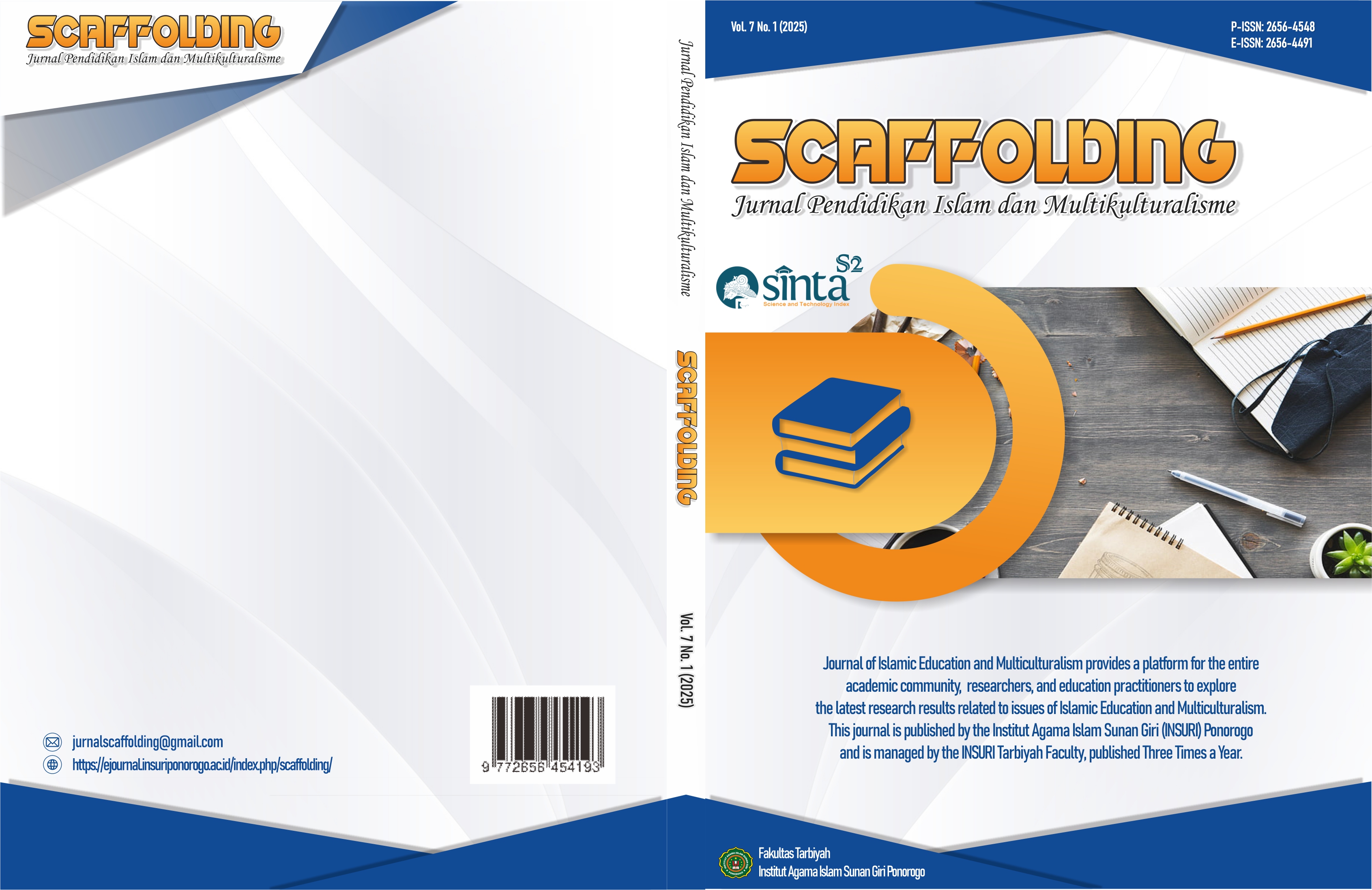The Effectiveness of the Circle Discussion Strategy in Developing Social Skills Among Seventh Grade Basic Students
DOI:
https://doi.org/10.37680/scaffolding.v7i1.7180Keywords:
Circle discussion strategy, social skills, seventh grade, cooperative learning, classroom interactionAbstract
This study aimed to investigate the effectiveness of the circle discussion strategy in developing social skills among seventh-grade basic students. An experimental design was employed with 57 female students divided into experimental (n=32) and control (n=25) groups. The experimental group was taught using the circle discussion strategy while the control group received traditional instruction. Data was collected using a social skills assessment measuring six key dimensions: cooperation and group work, communication, empathy and acceptance of others, school-home social skills, decision-making, and problem-solving. The experiment was conducted during the first semester of the 2024-2025 academic year in Zakho, Kurdistan Region, Iraq. Findings revealed statistically significant differences between the experimental and control groups in favor of the circle discussion strategy group. Analysis showed a large effect size (η²=0.496), confirming the strategy's substantial impact on developing students' social skills. The results suggest that structured circle discussion activities provide valuable opportunities for students to practice social skills in authentic contexts, reinforcing the importance of implementing interactive pedagogical approaches in middle school classrooms.
Downloads
Published
How to Cite
Issue
Section
License
Copyright (c) 2025 Nida Qahtan Fattah, Azhar Ali Hussein Ibrahim, Othman Abdulkarim Omer

This work is licensed under a Creative Commons Attribution-NonCommercial 4.0 International License.
Authors who publish with this journal agree to the following terms:
Authors retain copyright and grant the journal right of first publication with the work simultaneously licensed under a Creative Commons Attribution-NonCommercial 4.0 International License that allows others to share the work with an acknowledgement of the work's authorship and initial publication in this journal.
Authors are able to enter into separate, additional contractual arrangements for the non-exclusive distribution of the journal's published version of the work (e.g., post it to an institutional repository or publish it in a book), with an acknowledgement of its initial publication in this journal.
Authors are permitted and encouraged to post their work online (e.g., in institutional repositories or on their website) prior to and during the submission process, as it can lead to productive exchanges, as well as earlier and greater citation of published work.



